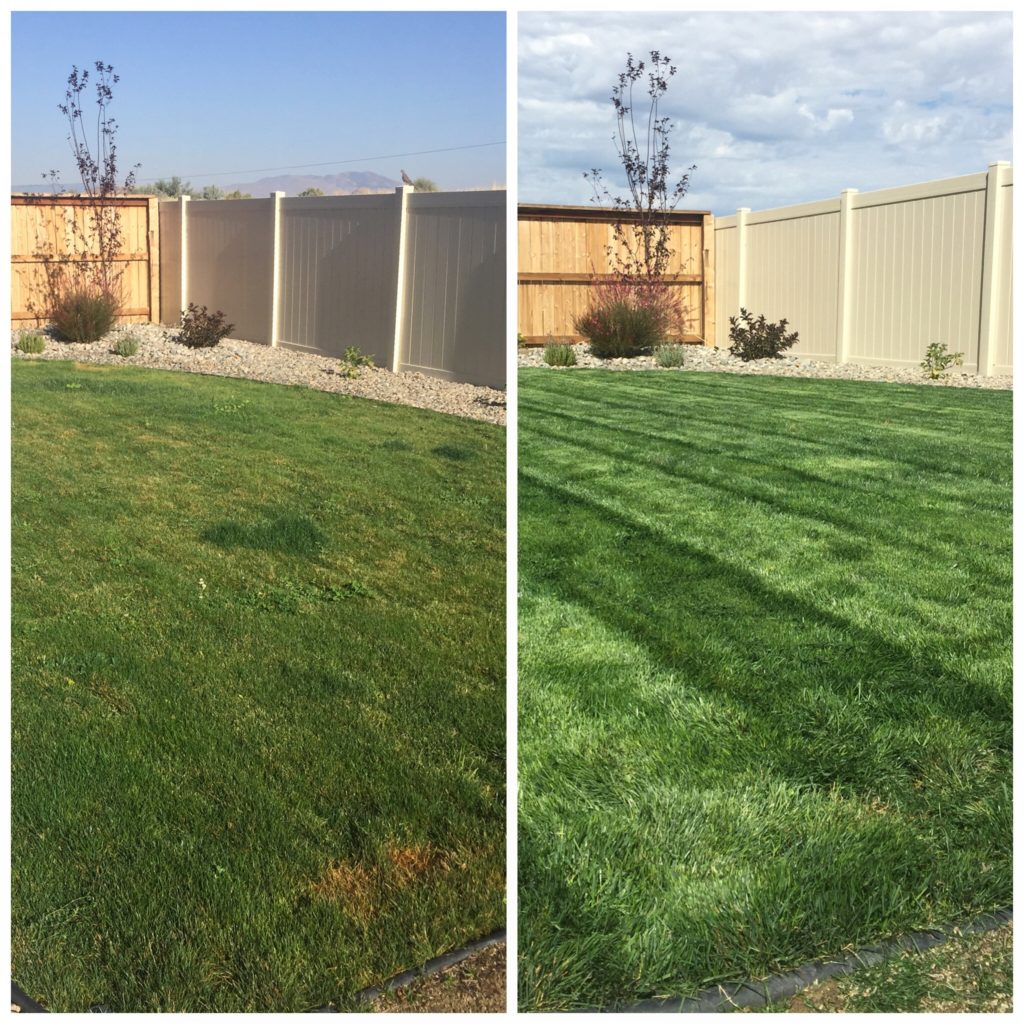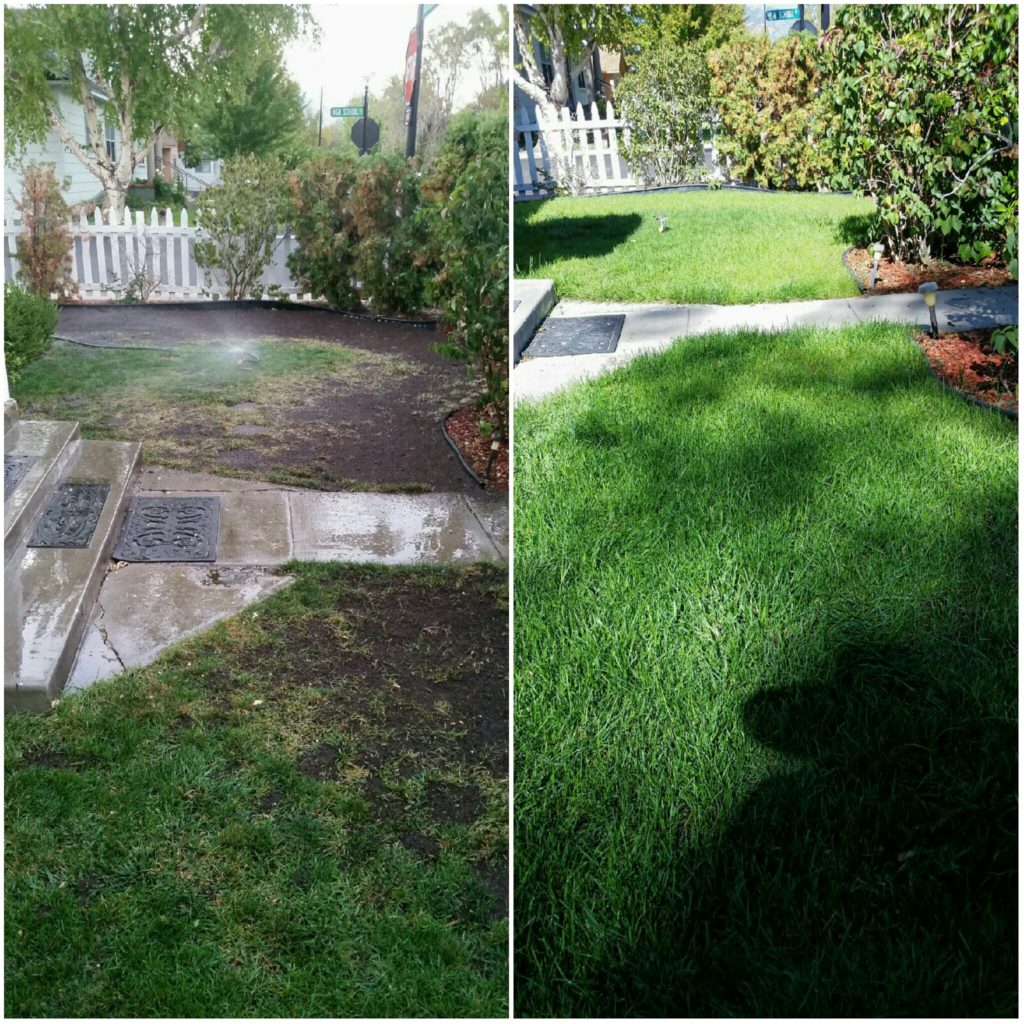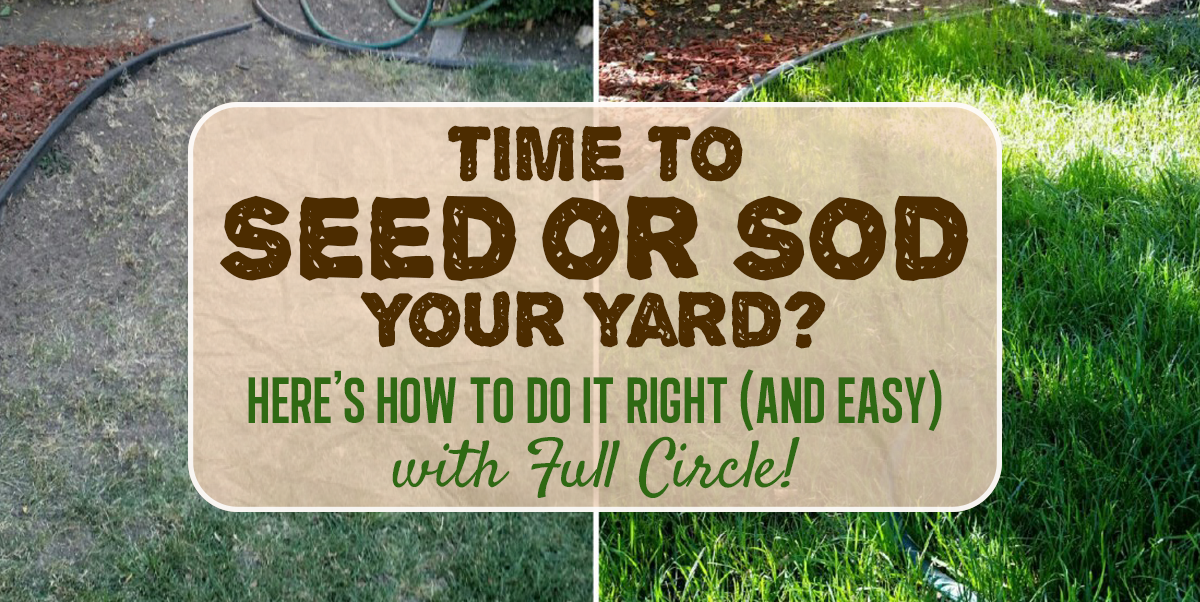If you’re thinking of establishing a lush lawn around your home, business, favorite restaurant, barn, hot tub or any other area, you’re in the right place. And, because we are blooming into early spring as we speak, you’re also in the right time.
Simply speaking, the two best times of the year to start a lawn are early spring and early fall. Outside of those two times, you risk either a frozen ground or temperatures that are too hot to keep your new lawn from drying out.
Whether you’ve identified seeding, sodding, or fertilizing as the best approach for your yard, Full Circle is going to make things EASY. Who doesn’t like easy?
While sowing seeds or simply fertilizing is typically cheaper, sodding typically gets you to a full, lush, attractive lawn quicker. So, whichever option you choose is more appealing to your situation, see below for some helpful tips getting the greenest, most lush grass in the neighborhood (no tricks needed!).
Use BOOST To Fertilize Your Lawn
The best process for fertilizing your lawn is to use Full Circle’s BOOST. This chemical-less alternative to other fertilizers is all-natural and plant-, people-, and animal-friendly.
Here’s how to fertilize that yard of yours:
- Rake the existing lawn, getting up any of that old dead stuff
- Spread 1/4 inch of BOOST as evenly over the lawn as you can
- Water! … It’s just that simple


The Best Process to Seed Your Lawn (or Re-Seed)
If your lawn looks like it could use some help in certain spots, re-seeding those areas with quality seeds and some BOOST will get those seeds sprouting and growing into the greenest grass on the block.
Let’s get right to it:
- Rake existing bare spots across entire desired coverage area
- Get a seed spreader and spread those seeds!
- Spread 1/4 inch of Full Circle’s BOOST over the seeding area(s)
- Watering newly sown seeds: Twice a day, 6 minutes per cycle. If possible, set morning timers to 8:00 AM and afternoon timers at 3:00 PM. Remember, you have to keep the seeds wet for 2 weeks. Then water normally.
- Now, get your lawnmower tuned up because you’re about to be trimming your lawn in as little as 3 weeks!

The Best Process to Lay Sod (or Re-sod)
Laying sod will most likely give you the best results when you’re looking to repair (or add) lush, vibrant grass to your yard. Although it can be pricey, laying sod along with Full Circle’s BOOST is sure to give you results that are worth it.
Here we go:
- Rake debris out of the desired sodding area
- Flatten any aggressive bumps you’re not thrilled about having in your lawn
- Spread 1/4 inch of BOOST on soil surface
- Lay that sod!
- Watering: Your sod provider will have some tips based on the type of sod you purchased. Most sods will appreciate a good watering 2 times per day.
With the above method, there’s no need for starter fertilizer. BOOST will give the transplanted grass all the nutrients it craves and your new sod will “hookup” with your yard in about 2 weeks. It really can be that easy. If you’re starting now, you’re taking a gamble with Mother Nature because she could still send us a freeze and inhibit you from using your sprinkler system. It’s a gamble every year guessing when she’s done with her cold shoulder and when she’s ready to help growers get a leg up on the upcoming growing season.
Want To Get All Science-y?
BOOST helps dramatically increase mycorrhizal colonization. But what the heck does this mean?
- Well, recent findings of improved turf grass establishment, root growth, fertilizer utilization, coverage has encouraged many turf managers to include mycorrhizal inoculations in when establishing a lawn.
- Why? Because research has shown that mycorrhizae can reduce moisture stress in grasses (Koske et al 1995; Auge et al. 1995; Allen et. al. 1991). Studies published in Journal of Turfgrass Science state that creeping bentgrass inoculated with mycorrhizal fungus tolerated drought conditions significantly longer than non-mycorrhizal turf (Gemma et al. 1997). Mycorrhizal-inoculated turf also recovered from drought- induced wilting more quickly than non-mycorrhizal turf. The data also shows that mycorrhizal turf maintained significantly higher (avg. 29% more) chlorophyll concentrations than non-mycorrhizal turf during drought events.
- Now here’s the kicker: Turfs using BOOST have seen mycorrhizal colonization on average of 40-60% colonization!
BOOST Your Lawn!


Want your lawn to look like this? Give it a BOOST!
A Note on Raising the Level of Your Soil
If your goal is to raise the level of your soil (for whatever reason it may not be flush with surrounding features), we recommend raising your grade with garden soil (not relying solely on a soil amendment like BOOST). If you’re in the market for this kind of job, try our awesome garden soil, KICK. Get all your Full Circle products at these local retailers: https://fullcirclecompost.com/find-us/
Full Circle’s BOOST is the most satisfying all-natural soil amendment available. Get this good green stuff at these local retailers: https://fullcirclecompost.com/find-us/




